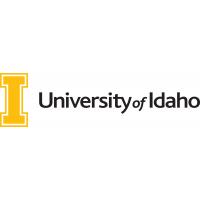Real-time data- and location-sharing using mesh networking radios paired with smartphones may improve situational awareness and safety in remote environments lacking communications infrastructure. Despite being increasingly used for wildland fire and public safety applications, there has been little formal evaluation of the network connectivity of these devices. The objectives of this study were to 1) characterize the connectivity of mesh networks in variable forest and topographic conditions; 2) evaluate the abilities of lidar and satellite remote sensing data to predict connectivity; and 3) assess the relative importance of the predictive metrics. A large field experiment was conducted to test the connectivity of a network of one mobile and five stationary goTenna Pro mesh radios on 24 Public Land Survey System sections in northern Idaho. Dirichlet regression was used to predict connectivity using 1) both lidar- and satellite-derived metrics (LIDSAT); 2) lidar-derived metrics only (LID); and 3) satellite-derived metrics only (SAT). On average the full network was connected only 32.6% of the time and the mobile goTenna was disconnected from all other devices 18.2% of the time. RMSE for the six connectivity levels ranged from 0.101 to 0.314 for the LIDSAT model, from 0.103 to 0.310 for the LID model, and from 0.121 to 0.313 for the SAT model. Vegetation-related metrics affected connectivity more than topography. Developed models may be used to predict the expected performance of real-time mesh networks to support wildland firefighting, forestry, and public safety. However, safety professionals should be aware of the impacts of vegetation on connectivity.
Data and Resources
| Field | Value |
|---|---|
| Modified | 2022-12-12 |
| Release Date | 2022-05-19 |
| Publisher | |
| Identifier | 7cebefde-a25c-4760-816b-3ca9d2650981 |
| Spatial / Geographical Coverage Area | POLYGON ((-116.61 45.28, -116.61 46.91, -115.57 46.91, -115.57 45.28)) |
| Spatial / Geographical Coverage Location | northwestern Idaho, USA |
| Temporal Coverage | Saturday, October 29, 2016 - 00:00 to Friday, November 1, 2019 - 00:00 |
| License | |
| Granularity | Each row in the LIDSAT, LID, and SAT datasets represents data summarized for a Public Land Survey System (PLSS) section, each of which are approximately one square mile in size. |
| Author | |
| Contact Name | Eloise Zimbelman |
| Contact Email | |
| Public Access Level | Public |


![[Open Data]](https://assets.okfn.org/images/ok_buttons/od_80x15_blue.png)